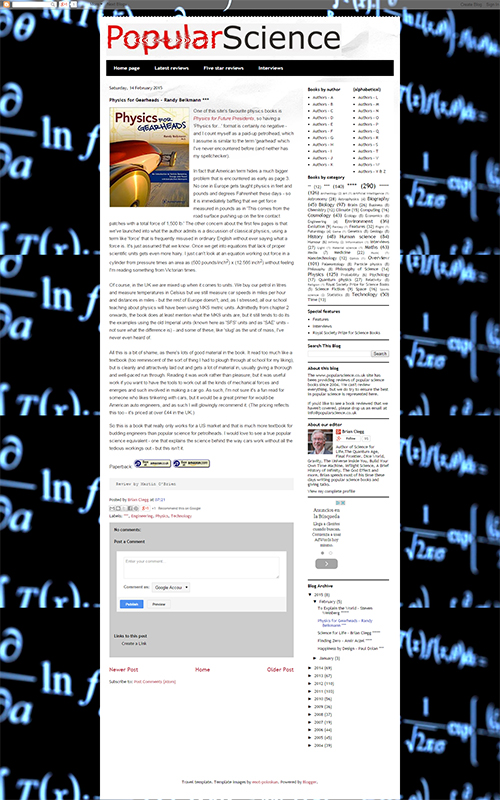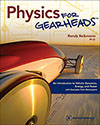|
Now Available! |
Physics for Gearheads
Price: $119.95
|

Popular Science UK - February 14, 2015
One of this site's favourite physics books is Physics for Future Presidents, so having a 'Physics for...' format is certainly no negative - and I count myself as a paid-up petrolhead, which I assume is similar to the term 'gearhead' which I've never encountered before (and neither has my spellchecker).
In fact that American term hides a much bigger problem that is encountered as early as page 3. No one in Europe gets taught physics in feet and pounds and degrees Fahrenheit these days - so it is immediately baffling that we get force measured in pounds as in 'This comes from the road surface pushing up on the tire contact patches with a total force of 1,500 lb.' The other concern about the first few pages is that we've launched into what the author admits is a discussion of classical physics, using a term like 'force' that is frequently misused in ordinary English without ever saying what a force is. It's just assumed that we know. Once we get into equations that lack of proper scientific units gets even more hairy. I just can't look at an equation working out force in a cylinder from pressure times an area as (500 pounds/inch2) x (12.566 inch2) without feeling I'm reading something from Victorian times.
Of course, in the UK we are mixed up when it comes to units. We buy our petrol in litres and measure temperatures in Celsius but we still measure car speeds in miles per hour and distances in miles - but the rest of Europe doesn't, and, as I stressed, all our school teaching about physics will have been using MKS metric units. Admittedly from chapter 2 onwards, the book does at least mention what the MKS units are, but it still tends to do its the examples using the old Imperial units (known here as 'SFS' units and as 'SAE' units - not sure what the difference is) - and some of these, like 'slug' as the unit of mass, I've never even heard of.
All this is a bit of shame, as there's lots of good material in the book. It read too much like a textbook (too reminiscent of the sort of thing I had to plough through at school for my liking), but is cleanly and attractively laid out and gets a lot of material in, usually giving a thorough and well-paced run through. Reading it was work rather than pleasure, but it was useful work if you want to have the tools to work out all the kinds of mechanical forces and energies and such involved in making a car go. As such, I'm not sure it's a fun read for someone who likes tinkering with cars, but it would be a great primer for would-be American auto engineers, and as such I will glowingly recommend it. (The pricing reflects this too - it's priced at over £44 in the UK.)
So this is a book that really only works for a US market and that is much more textbook for budding engineers than popular science for petrolheads. I would love to see a true popular science equivalent - one that explains the science behind the way cars work without all the tedious workings out - but this isn't it.

Review from and courtesy of Popular Science UK - February 14, 2015
http://popsciencebooks.blogspot.com/2015/02/physics-for-gearheads-randy-beikmann.html
![[B] Bentley Publishers](http://assets1.bentleypublishers.com/images/bentley-logos/bp-banner-234x60-bookblue.jpg)
